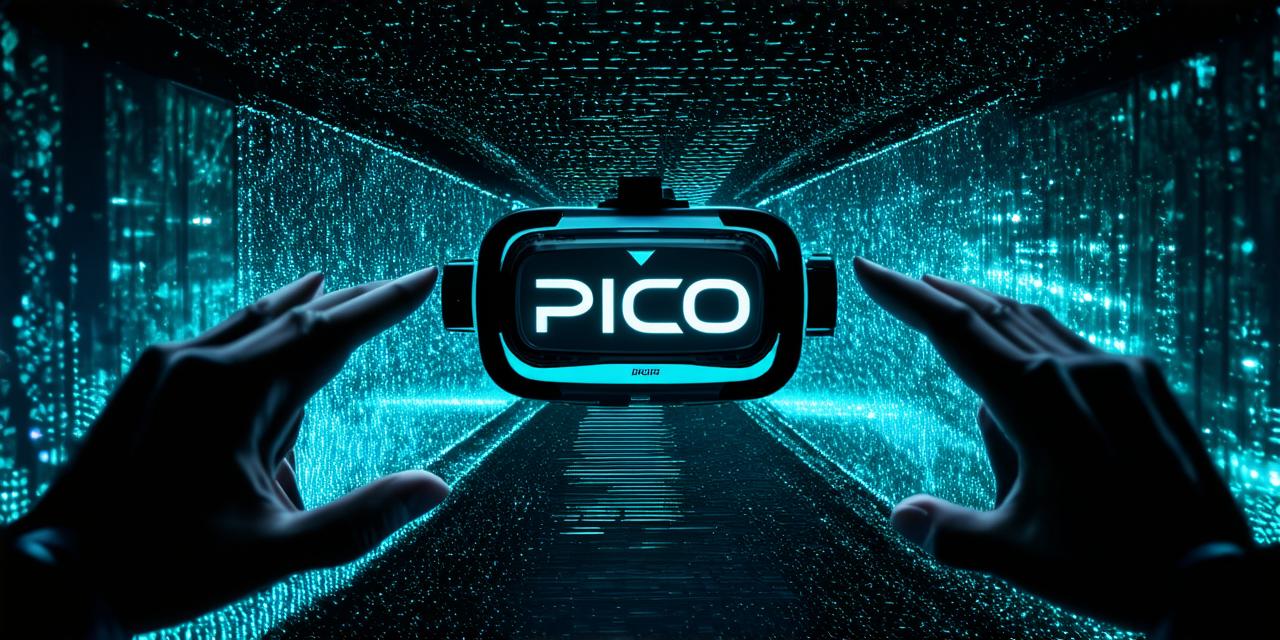As virtual reality (VR) technology continues to evolve and become more accessible, Pico VR is quickly gaining popularity as a powerful development tool. With its compact size, low cost, and high-quality display, Pico VR offers an immersive experience that can greatly enhance user experiences in various applications, from gaming to education and training.
Immersive Experiences
One of the key advantages of Pico VR development is its ability to create immersive experiences for users. By providing a fully interactive, 3D environment that engages the senses, Pico VR can transport users into new worlds and provide them with a unique perspective on their surroundings. This technology has been particularly successful in gaming, where it offers players an unprecedented level of immersion that can greatly enhance their overall experience.
For example, consider the popular game “Beat Saber” developed by Beat Games. The game uses Pico VR to create a fully immersive environment where players must use virtual light sabers to slash through blocks that correspond with musical beats. This creates an engaging and fun experience that has captivated millions of users around the world.
Similarly, Pico VR development can also be used in education and training applications to create interactive experiences that help learners better understand complex concepts. For example, a medical student could use Pico VR to explore the human body in 3D, allowing them to see and interact with different organs and systems in a way that is not possible with traditional textbooks or lectures.
Enhancing User Interactions
Another key advantage of Pico VR development is its ability to enhance user interactions. By providing users with a fully immersive environment, Pico VR can enable them to interact with virtual objects and environments in ways that are not possible with traditional input devices such as keyboards or touchscreens. This can greatly enhance the overall user experience, making it more intuitive and engaging.
For example, consider the virtual reality platform “Unity”. Unity is a powerful tool for developing Pico VR applications, and it offers a range of features that make it easy to create interactive experiences. With Unity, developers can create custom controllers that enable users to interact with virtual objects in ways that are not possible with traditional input devices. This could include picking up and manipulating objects or using hand gestures to control different parts of a virtual environment.
Improving Accessibility
Pico VR development also has the potential to improve accessibility for users with disabilities. By providing a fully immersive experience that can be controlled using a range of input devices, Pico VR can enable users with disabilities to interact with virtual environments in ways that are not possible with traditional input methods. This can greatly enhance their overall user experience and provide them with new opportunities for engagement and interaction.
For example, consider the use of Pico VR in physical therapy applications. By providing a virtual environment that can be controlled using hand gestures or custom controllers, Pico VR can enable patients to perform exercises and movements that are not possible in their real-world environment. This can greatly enhance their overall recovery process and provide them with new opportunities for engagement and interaction.
Research and Experiments
There is a growing body of research and experimentation surrounding the use of Pico VR development in enhancing user experiences. For example, a recent study published in the journal “Nature Communications” found that using Pico VR to simulate real-world environments can greatly enhance the learning experience for medical students. The study found that students who used Pico VR to explore the human body were able to recall more information and perform better on practical exams than those who used traditional teaching methods.
Another example of research into Pico VR development is the use of the technology in the field of mental health. For example, a recent study published in the journal “Virtual Reality” found that using Pico VR to simulate exposure therapy for anxiety and phobias was highly effective. The study found that participants who used Pico VR to face their fears in a virtual environment were able to reduce their symptoms and improve their overall well-being more effectively than those who used traditional therapy methods.
In conclusion, Pico VR development is an exciting and rapidly evolving field that has the potential to greatly enhance user experiences in various applications. With its ability to create immersive environments, enable intuitive interactions, and improve accessibility, Pico VR is poised to become a major player in the world of virtual reality development. As the technology continues to advance, we can expect to see even more innovative and exciting applications of Pico VR in the future.
